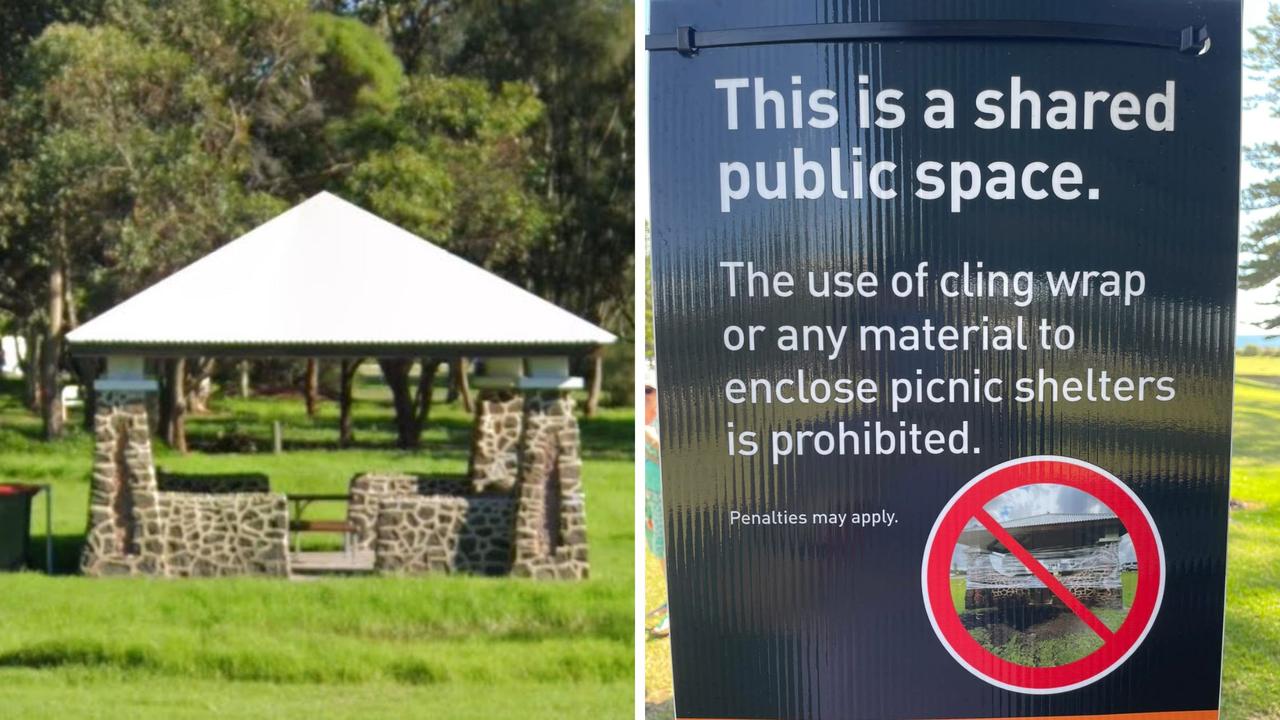Vegetable garden ideas: Yes, you can grow veggie patches and herb gardens in small spaces, here’s how
Being stuck in isolation may have you flexing your green thumb but here’s what you need to know before you head out to your local hardware store or garden centre.
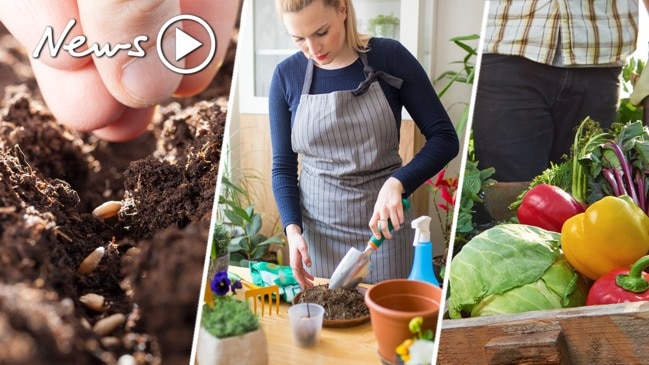
Outdoors
Don't miss out on the headlines from Outdoors. Followed categories will be added to My News.
Anyone with a failed basil plant or limp coriander leaf will know herb gardens and veggie patches aren’t for the faint-hearted. But with ISO-cooking firmly on the agenda, growing our own produce is becoming a productive pastime of converted green thumbs everywhere.
But what do you grow, and how do you start? And what if your space is limited? Here’s how the experts do it.
DESIGN AND PLAN FOR SUCCESS
Like with any garden, design and planning is always the first step, says landscape designer Phil Antcliff, director at Sydney’s Fifth Season Landscapes.
“Locate the best position, choose the herbs and veggies you like, the container type you want to use and when you will have time to complete the project,” he says.
“It is a good idea to know what you would like to grow, and what you will get the most use out of.
“Then check to see if this season is the right one to plant in.
“If not leave some space in the garden for future plantings so you can have your favourites.”
He says autumn is the perfect time to plant vegetables like spinach, green beans and peas, as well as herbs like coriander, parsley and thyme.
“Some of the leafy vegetables can be ready for harvest in as little as six weeks, while some root vegetables can take 18 weeks to mature.”
RELATED: Aldi does it again with inflatable spas
RELATED: Best way to avoid supermarket lines
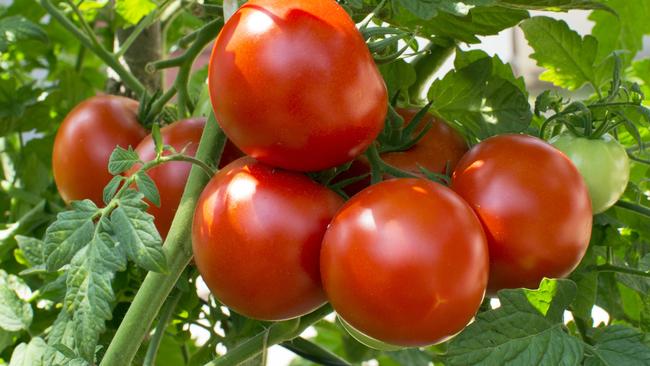
RAISE THE STAKES
Mr Antcliff suggests choosing a position that has a good amount of summer and winter sunlight for best growing conditions, with protection from wind if possible. Most herbs and veggies love good drainage, so it’s a good idea to use a raised garden bed or container to help with free-draining soil.
“It also helps your lower back by not having to bend down so far,” he says.
“Raised planters can come in all shapes and sizes. You can buy premade veggie boxes or pods from places like Bunnings – or you can build your own using materials like hardwood sleepers or recycled bricks.”
Looking for things to pass the time? The best shows to watch, the funniest videos, the best hacks and home workouts? Find it all at our Life (goes on) in Lockdown section
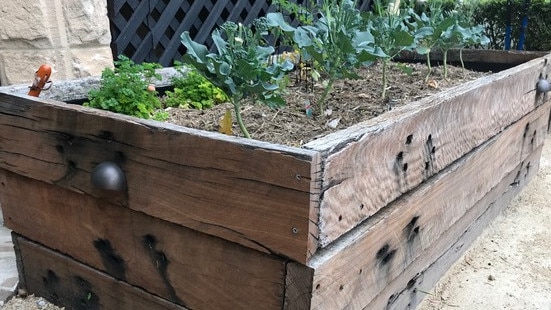
Once you’ve built you planter or bought your pod, the next step is to install the drainage material and soil.
“For the bottom layer of drainage use an aggregate like blue metal, about 100mm should do the trick, then add a layer of filter fabric, which will hold the soil but allow the water to pass through ensuring your drainage doesn’t block and the plants roots don’t sit in pools of water,” he says.
“Add the soil and make sure to get specialised veggie mix to maximise your plant growth.
“You will also need a good mulch to install after planting to retain soil moisture. I use a sugar can mulch which will breakdown over time and add organic matter to the soil.”
WHEN SIZE IS AN ISSUE …
The principle is the same no matter what size area you have.
“The only limit is the size of the plants that can be grown – citrus trees in pots can work really well on a balcony,” Mr Antcliff says.
“Combine this with a cluster of smaller pots planted with parsley, coriander, sage and thyme and you’ve yourself a great little kitchen garden.
“My best is advice is to start small and simple, learn the herbs and veggies that you find easy to grow – parsley, mint and rosemary are a great place to start.”
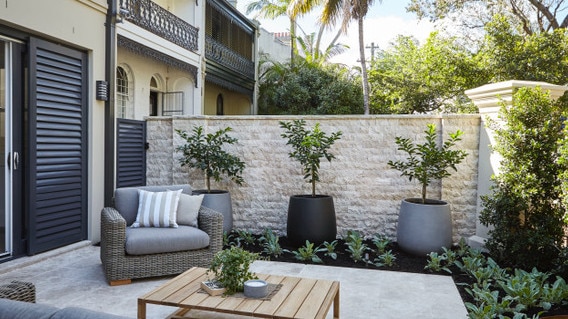
THINK BIG, MAXIMISE SMALL
Christian Chambers from Sydney Master Gardens says in small spaces, you need to think outside the box to maximise the area you have.
“Some areas might give you height – as in tall courtyard walls or boundary fences – so trellising can be put up to grow climbers like tomatoes, passionfruit or cucumber,” he said.
“The typical wall garden will also be a good option.
“Some small spaces might give you length, like narrow long verandas or a side path, where narrow tall planters can be used inter-planting herbs and annual edible or scented flowers.”
He said espalier fruit trees also lend themselves to small sunny spaces like courtyards, while herbs can be grown from hanging baskets to save space.
FAST RESULTS A WIN FOR KIDS
If you have children, things like radishes – best planted in autumn and early spring – are great because they are easy to grow and offer fast results.
“They might not like the taste so much, but a physical result will keep interest,” he said.
“Snow peas are another good one for kids and a bit more palatable … and be consistent with your watering, keeping soil at a consistent moisture level.
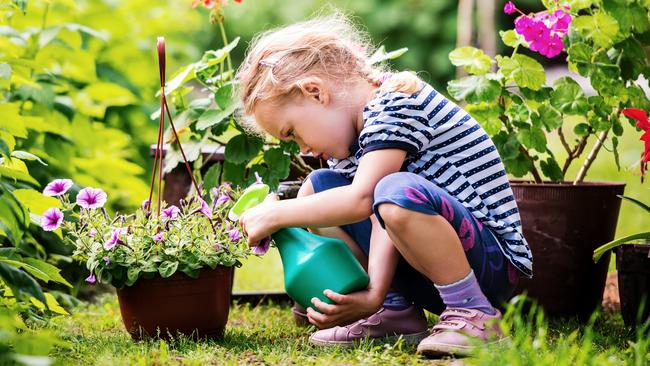
“Erratic watering drying out and then overwatering will tend to give you poor results and force some plants to bolt to seed.
“Using pots or containers of a similar size can help with that as you don’t have small pots drying out while large ones retain their moisture, giving you an inconsistency in soil moisture through the garden.”
DON’T GO CRAZY WITH THE FERTILISER
“More is not better,” Mr Chambers says.
“Too much will have a negative affect – simple, homemade compost is best.”
He recommends a simple, general slow release like Osmocote, or a liquid Seasol.
“The best part about using Seasol is it will have you actively and consciously watering your plants as well as feeding them at the same time,” he says.
“Some good and easy things to grow in a pot are Swiss chard, mint, parsley, tomato, spring onion, oregano and chilli.”
Originally published as Vegetable garden ideas: Yes, you can grow veggie patches and herb gardens in small spaces, here’s how

